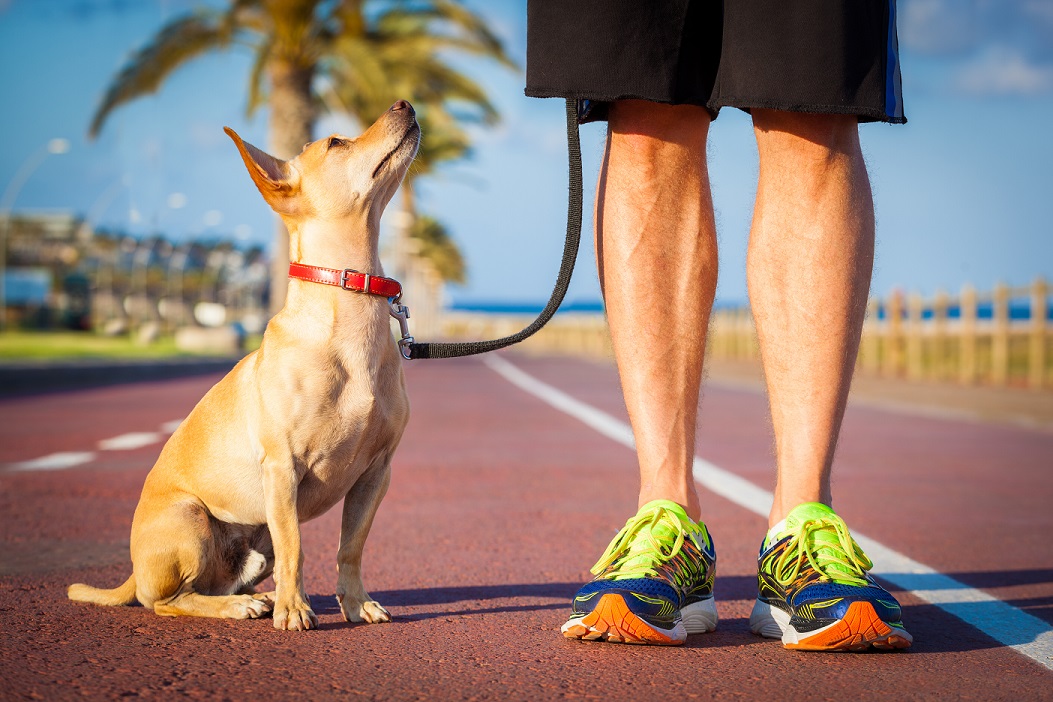
New year’s resolutions are always about improving ourselves, and often about getting in shape. Our pets can actually be good motivators for us to stay active and get fit. Unfortunately, about 80% of the American population does not get regular exercise and over 50% of the population is now considered obese.
The rise of obesity in Americans correlates with obesity in the pet population, especially since many overweight owners are not taking the time to exercise their pets. Additionally, many pet owners cannot accurately judge their pet’s Body Condition Score (BCS). The BCS is a chart from 1 to 9 in dogs and cats with lower numbers indicating an underweight pet, numbers 4 and 5 indicating ideal weight and anything from 6-9 indicating an overweight pet. Numbers on a scale cannot be relied upon in the pet world and that is why a body condition score is much more reliable than exact pounds. A study showed over 70% of owners in a study rated their pet’s body condition score (BCS) as much lower than it was when compared to a Veterinarian who objectively measured the pet’s BCS. This means that most Americans have no idea that their pets are overweight.
There are graphics that illustrate these BCS charts for dogs and cats but you can also use the Knuckle test as a simpler way to understand your pet’s body condition. Basically, if your pet is too thin, then the ribs will be visible and will feel like the top of your knuckles when your hand makes a fist. A pet who has an ideal body condition will feel like your knuckles when your hand is flat, palm down. An overweight pet’s ribs will feel like your knuckles when felt from the palm aspect of your open hand.
There are many different reasons for a pet to be overweight other than being under-exercised and overfed with dog food and/or human foods. Regular exercise and cutting calories and treats are always a good way to start but if you are not being successful at decreasing your pet’s weight to an ideal body condition then you should partner with your Veterinarian who can help you with more specific recommendations based on your specific pet’s situation. Overweight pets, like people, are more likely to have chronic disease such as diabetes, arthritis and other underlying chronic conditions. For example, hypothyroidism can be common and there is an easy 15-minute blood test for diagnosis. Treatment is simple and your pet will show new life and usually a better coat. Arthritis may also keep your pet from wanting or being able to exercise. Fortunately, we can control pain and use prescription diets that are formulated for weight loss and have joint supplements included in them. Some breeds are especially prone to becoming obese including, but not limited to, Bulldogs, Pugs, Dachshunds, Chihuahuas, Beagles, Labs, and almost all house cats.
Unless you’re preparing for a specific event such as running a marathon or playing a specific sport, 30 minutes of walking a day is recommended by the National Academy of Sports Medicine for a healthier lifestyle with a multitude of benefits comparable to spending two to three hours in a gym three times a week. Bringing your pet with you on these walks will help both of you stay healthy and work toward New Year’s Resolutions for you and your pet.
We want to wish you the best in the new year! Please feel free to contact us if you would like a consultation with Dr. Wendt.
